Never has a neck been as long (and hyphen placement been so important) then when the “Beautiful bottom-feeders” roamed the oceans.
Throughout the extensive reign of the dinosaurs, long necks were widespread across multiple clades and ecological niches, some extending an incredible fifteen meters out from the shoulders.
But since then, long necks seem to have become less fashionable.
Necks are significantly shorter across the animal kingdom now than they once were, and nobody’s really sure why, but a handful of old-schoolers remain. Animals who have not been pressured by modern trends to conform, and who stand tall, heads held high, atop glorious cervical protrusions.
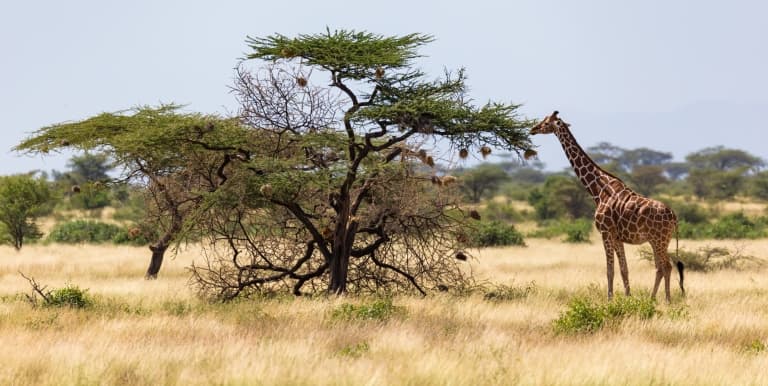
This piece is to celebrate the long neck and advocate for its return!
10. Monitor Lizard
Monitors are the largest lizards left now, and some have proportionally long necks compared with the rest of lizard-kind.
Interestingly, this group of lizards appears to share something in common with marine iguanas, in that the majority of monitors are aquatic or semi-aquatic.
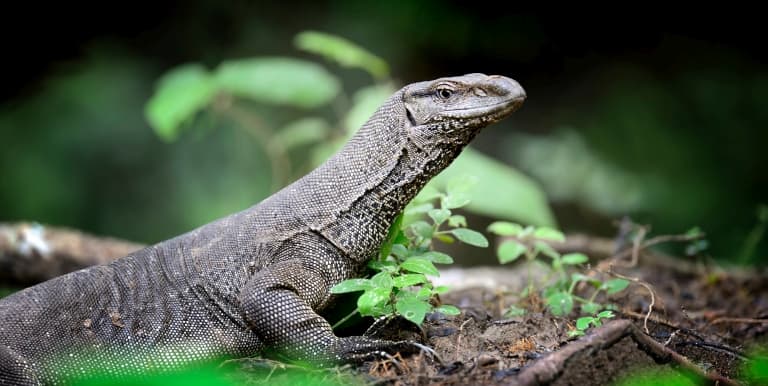
They’re also very fit animals with a strong circulatory system, something that appears to be quite important when it comes to pushing blood along a long and narrow channel to the brain.
Monitors are successful predators across much of the planet, occupying niches more typically filled by mammals and holding their own against their warmer-blooded competitors. 1
9. Swan
Waterfowl are classified by how many neck bones they’ve got. Ducks have 16, geese have between 17 and 24, and swans, the longest-necked of them all, have 24 or more cervical vertebrae.
In these romantic, furious animals, a long neck is great for shovelling up crap from the bottom of streams and ponds, at depths that ducks and geese can’t reach.

This is a product of niche separation: while many waterfowl will eat the same food, they can each avoid expensive competition by exploiting these resources in different ways. 2
8. Snake-necked Turtle
Fish are about the best you can get at swimming, which makes life hard for terrestrial or semiaquatic vertebrates who need to eat them.
Snake-necked turtles follow the trend of adapting to a watery world by increasing the space between their heads and shoulders. Still, in these animals, there are only eight cervical vertebrae involved.

In addition to this extendable grabber, some have tongues that act as lures to bring the fish closer, reducing the embarrassment involved in trying to chase after them.
A fast-striking neck, in water, requires a relatively huge and heavy body since the relativistic forces will push the body away from the fish if there isn’t enough inertia. So, snake-necked turtles have necks that appear small and spindly compared with their huge bodies, to increase the effect of the strike.
7. Camel
In the desert, there are several advantages to having a long neck. The wide, open plains are easier to scan from a raised position, and drinking water becomes more comfortable if you don’t have to rest your belly on the scorching earth.
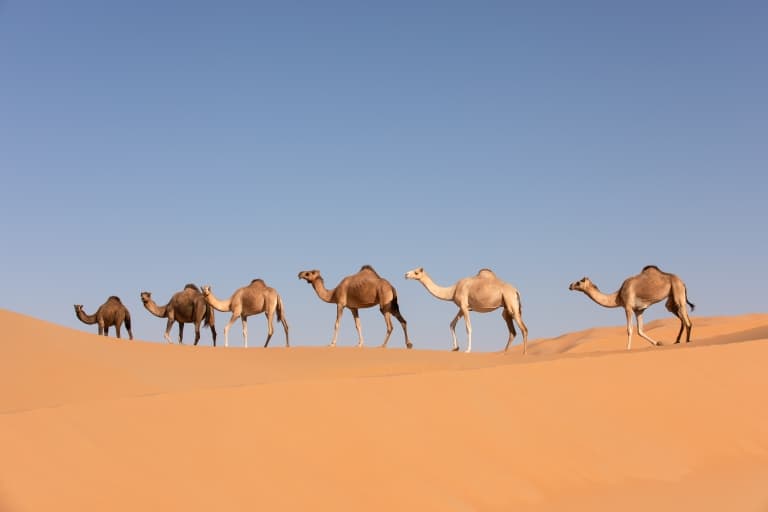
This elongation of the neck likely comes as a secondary advantage to growing long legs, which may have evolved for higher browsing, back when they evolved in North America.
Camels today have fairly long necks, but there’s an extinct species that once stood up to three meters off the ground, feeding from trees, sparsely dotted about in the grasslands. 3
6. Vulture
Vultures don’t feed from trees, or the bottom of ponds, or ambush their prey. They don’t usually need to be all that vigilant, either, so why are their necks so long?
Vulture necks are fantastic for inserting their heads into gaping wounds, and in many cases, the simplest and most tender openings in the back end of a large, dead mammal.

Animal skin is tough by design, so being able to penetrate and enter deep into the more palatable tissues of a carcass is a huge advantage over spending energy breaking in. Vultures have therefore adapted to growing long, bald tools with which to do so.
5. Ostrich
Today, the largest and heaviest bird is also the one with the longest neck. Interestingly though, unlike the swan with its 24+ vertebrae, these enormous necks contain only 17.
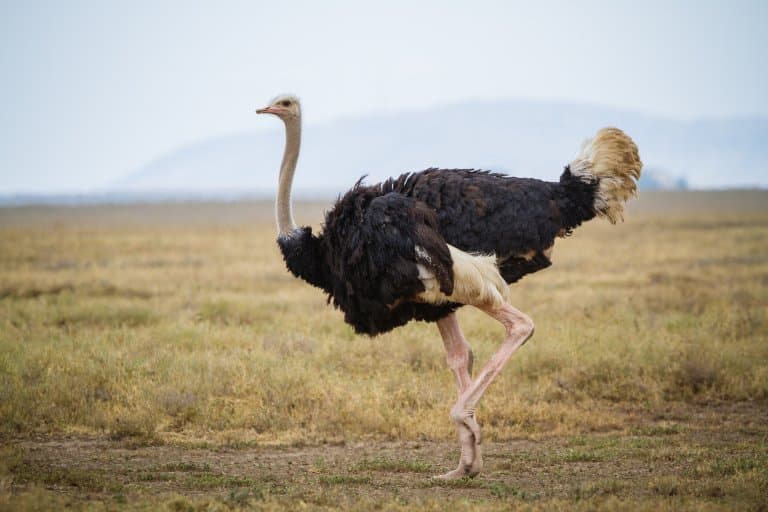
These are big and powerful birds, but they are by no means the most powerful animals on the savanna. So, a long neck helps keep the bird alert and informed of the crouching lions and hidden Nyanga dragons that might be trying to eat them.
Contrary to popular myth, they’re not long enough to bury their heads in the sand. 4
4. Gerenuk
The name gerenuk means, “Giraffe-necked” in Somali, and the first thing you’ll notice about one is its ridiculously long neck.
Like all but two mammals, this one only has the standard seven cervical vertebrae but has evolved them to epic proportions.

Watching these antelope in the wild, it becomes immediately apparent why. Gerenuks feed on their tiptoes, necks outstretched, browsing the most succulent packets of roughage at heights their peers can only dream of.
Again, this is a great way to share the same space as others without competing for the same diet.
3. Longneck Eel
This family of eels has a distinctive feature, and the very astute among you might have already guessed what it is.
Derichthys species in particular come with tiny heads, big eyes and large bodies, separated by a stringy little neck.
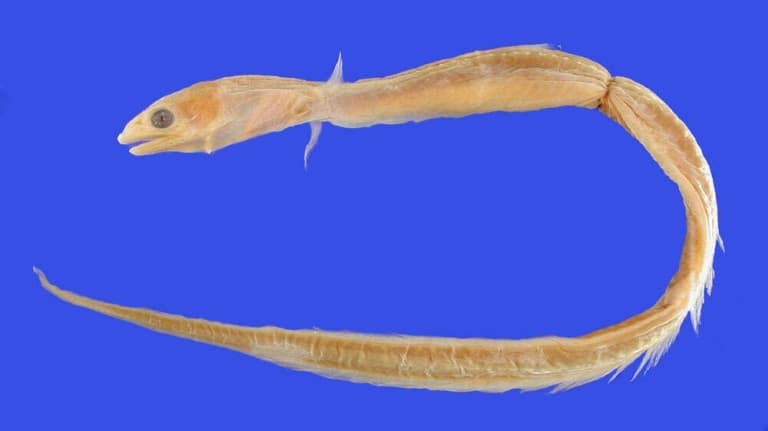
They live in the dark reaches of the oceans, so of course we know almost nothing about them, so the benefits to their bizarre morphology remain a bit of a mystery, but they are weird and long-necked enough to make it onto the list!
2. Giraffe Weevil
The namesake of the obvious top contender is a fantastic little beetle with an enormous protrusion.
Males and females both have bizarre-looking necks, with the males’ extending 2-3 times farther than that of the females.
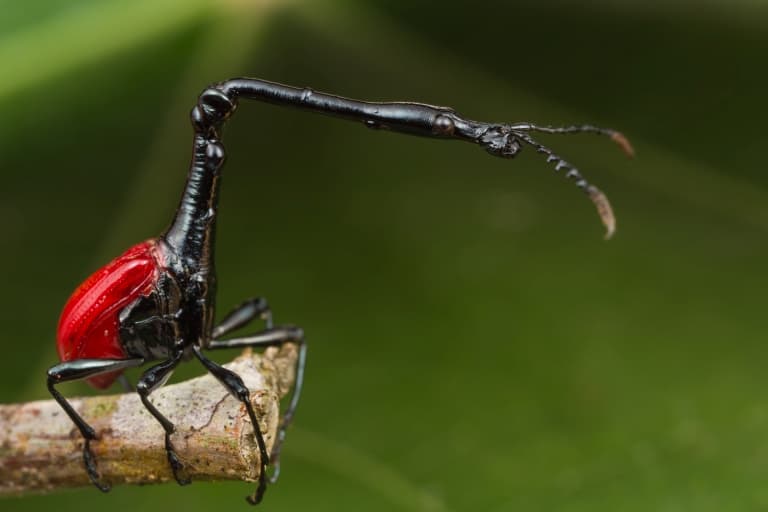
This strongly suggests a sexual competition element, perhaps involving long-necked fighting to the death between rival head-bangers.
This species was discovered very recently, so we don’t know all that much about it but the idea may not be such a ridiculous one, since we see something very similar in the next entry on our list. 5
1. Giraffe
The longest neck in the animal kingdom today is attached to the adult male giraffe. This mammal has the classic 7 vertebrae, expanded to epic proportions, setting its head 2.4 meters above its shoulders.
No other animal has a neck even half this long (anymore), and while it was once thought to be designed for high browsing, it’s becoming apparent that competition played a huge role in its evolution.

Bull giraffes will engage in phenomenally dangerous battles using their necks as whips and it’s thought that this is why they initially evolved such strange appendages. Still, they’re not complaining about all the succulent forage that far up. 6
Final Thoughts
The evolution of long necks in animals is driven by diverse selective pressures and ecological demands, leading to varied adaptations.
A key factor in the development of long necks is related to feeding strategies, allowing animals to access dispersed or elevated resources. Gerenuks and swans, for instance, utilize their elongated necks to reach food that others can’t.
Long necks can enhance sensory capabilities, providing an extended field of vision for spotting predators or prey, as in the ostrich. Species like ostriches and camels use their long necks for heightened situational awareness in open landscapes.
Sexual selection also influences the evolution of long necks, as seen in the giraffe and the giraffe weevil with sexually dimorphic neck lengths.
Despite the advantages of long necks, a limiting factor is the challenge of breathing through an extended trachea. Birds, however, exhibit elongated tracheas, a unique adaptation enabled by their efficient lungs and voluminous air sacs, allowing them to cope with extreme tracheal elongation. Most animals aren’t this lucky, so have opted for shorter, more efficient necks.
This goes a long way to explaining why the majority of animals with long necks are birds, but as this list contends, there are still many outstanding animals who have figured out a way to make it work. 7
Fact Sources & References
- “Monitor Lizard/ Varanus“, Sambiya River Lodge.
- “Kellogg Bird Sanctuary: Know your Swans“, Kellogg Bird Sanctuary.
- Anil Sharma (2013), “Morphometry of Cervical Vertebrae of Camel (Camelus dromedarius)“, ResearchGate.
- C. POP, M. PENTEA (2007), “THE OSTEOLOGICAL FEATURES OF THE SKELETON IN
OSTRICH (STRUTHIO CAMELUS”, LUCRĂRI ŞTIINłIFICE MEDICINĂ VETERINARĂ VOL. XL - “Giraffe weevil“, San Fran Zoo.
- Jack Tamisiea (2022), “Giraffes May Be Long-Necked for Fights, Not Just Food“, NY Times.
- David M Wilkinson, Graeme D Ruxton (2016), “Understanding selection for long necks in different taxa“, PubMed.
